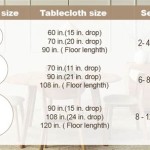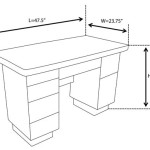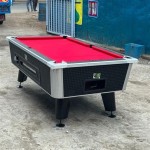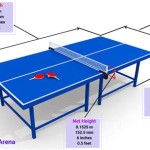Average Height of Coffee Table Legs: A Comprehensive Guide
The coffee table, a ubiquitous piece of furniture in living rooms and reception areas, serves as a functional surface for placing drinks, books, remote controls, and decorative items. One of the critical factors that determine a coffee table's usability and aesthetic appeal is the height of its legs. The average height of coffee table legs significantly influences the overall functionality, ergonomics, and visual harmony of the space. Understanding the typical range and factors influencing the selection of appropriate coffee table leg height is crucial for both furniture manufacturers and consumers.
The standard coffee table height generally falls within a range that aims to provide comfortable access from seated positions. While variations exist to cater to specific design styles and personal preferences, a general understanding of these dimensions can aid in making informed buying or building decisions. This article will explore the typical height ranges for coffee table legs, the factors that contribute to choosing the optimal height, and how the height impacts the overall design and usability of the table.
Understanding the Standard Height Range
The most commonly accepted height range for coffee tables is between 16 and 18 inches (40 to 46 centimeters). This range is generally considered optimal for use with standard-height sofas and chairs, allowing users to easily reach items placed on the table without excessive bending or stretching. This height provides a comfortable balance between accessibility and visual harmony within the room.
Within this range, there are variations based on the specific use and design aesthetic. For example, a lower coffee table, closer to 14 inches, might be chosen for a modern, minimalist space or to complement low-profile seating. Conversely, a slightly taller coffee table, approaching 20 inches, could be preferred when paired with higher sofas or sectionals, or when the table serves a dual purpose, such as occasional dining or working.
It is important to note that the overall height of the coffee table includes both the height of the legs and the thickness of the table top. When selecting or constructing a coffee table, it is crucial to account for the top's thickness to ensure that the final height aligns with the desired range. Neglecting this could result in a table that is either too low or too high for comfortable use.
Factors Influencing Coffee Table Leg Height Selection
Several factors should be considered when determining the appropriate height for coffee table legs. These factors encompass both functional requirements and aesthetic considerations, and careful evaluation of each will contribute to selecting the best possible height.
1. Seating Height: One of the most crucial factors is the height of the surrounding seating. Ideally, the coffee table should be approximately the same height as the seat cushions of the sofa or chairs. At most, it should be no more than one or two inches lower. This proximity allows for convenient access to the table's surface without requiring users to reach too far down. Measuring the seat height of the existing or planned seating is therefore a crucial first step in determining the optimal coffee table height.
2. Personal Preference and Usage: Individual preferences and how the coffee table will be used also play a significant role. Some individuals may prefer a lower table for a more relaxed, informal setting, while others may require a taller table for tasks such as eating or working. If the table is intended to serve as a surface for board games or puzzles, a slightly higher table might be more comfortable. Consider the primary activities that will take place around the coffee table and select a height that facilitates those activities.
3. Room Size and Style:. The size and style of the room influence the visual impact of the coffee table. In smaller rooms, a lower coffee table can help create a sense of spaciousness by maintaining a lower visual profile. Conversely, in larger rooms, a taller table may be necessary to balance the scale of the surrounding furniture. The architectural style of the room also contributes. A modern, minimalist room might benefit from a low-slung coffee table, while a more traditional room might accommodate a taller, more ornate table.
4. Design Considerations: The overall design of the coffee table, including the shape and material of the tabletop, also influences the perceived height. A thick, substantial tabletop will naturally appear taller than a thin, delicate one, even if the leg height is the same. Consequently, the leg height may need to be adjusted to compensate for the apparent height of the tabletop. The style of the legs themselves also contributes to the overall aesthetic. Simple, straight legs will create a different impression than ornate, curved legs.
Impact of Leg Height on Design and Usability
The height of the coffee table legs has a direct impact on both the design and the usability of the table. A well-chosen leg height can enhance the overall aesthetic of the room and improve the functionality of the living space.
1. Ergonomics and Comfort: Proper leg height contributes significantly to ergonomic comfort. A too-low table requires excessive bending, which can strain the back and neck. Conversely, a too-high table makes it difficult to reach items comfortably. The ideal height allows users to access the table's surface with minimal strain, promoting a more relaxed and comfortable experience. When choosing the leg height, prioritize ergonomic comfort to ensure that the coffee table is a functional and enjoyable addition to the room.
2. Visual Harmony: The height of the coffee table legs contributes to the visual harmony of the room. A table that is disproportionately tall or short can disrupt the overall balance of the space. Selecting a leg height that complements the surrounding furniture and the room's architecture creates a more cohesive and aesthetically pleasing environment. Consider the proportions of the other furniture pieces in the room, such as the sofa, chairs, and side tables, and choose a coffee table height that integrates seamlessly with these elements.
3. Space Optimization: The height of the coffee table legs can also impact space optimization. In smaller rooms, a lower coffee table with shorter legs can create a sense of spaciousness by minimizing visual clutter. Open space beneath the table can further enhance this effect. In larger rooms, a taller table with more substantial legs can help define the seating area and create a more intimate gathering space. The choice of leg height should therefore be informed by the size and layout of the room.
4. Functionality and Accessibility: The height of the coffee table legs directly affects its functionality and accessibility. A taller table might be more suitable for activities such as eating or working, providing a more comfortable surface for these tasks. A lower table might be preferred for relaxing and socializing, allowing for a more casual and informal atmosphere. The specific needs and preferences of the users should be considered when selecting the leg height to ensure that the table is both functional and accessible.
In summary, the average height of coffee table legs plays a crucial role in the overall design, functionality, and ergonomics of a living space. By understanding the standard height range, considering factors such as seating height, personal preference, room size and style, and evaluating the impact of leg height on design and usability, both consumers and furniture manufacturers can make informed decisions that result in a more comfortable, aesthetically pleasing, and functional living environment.

Average Table Height Differences For Desks Counters And Bars

Furniture Leg Height Guide Hammersmith

Metal Coffee Table Legs Spider Steel

3 Ways To Raise The Height Of A Table Wikihow

Star Furniture

Lorell Classroom Adjustable Activity Table Legs Standard Height Chromesilver Mist Set Of 4 Office Depot

Mandu Table Chair Legs Tow Rod Iron Wire Metal For Coffee End Bench Stool 10 Inch In Buy

Design Dining Table Leg Industrial And Modern Style

Metal Coffee Table Legs Modern Steel For Your By Symmetry Hardware

3 Ways To Raise The Height Of A Table Wikihow








